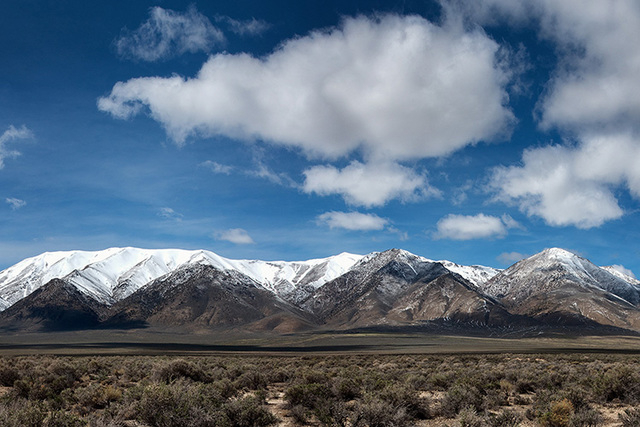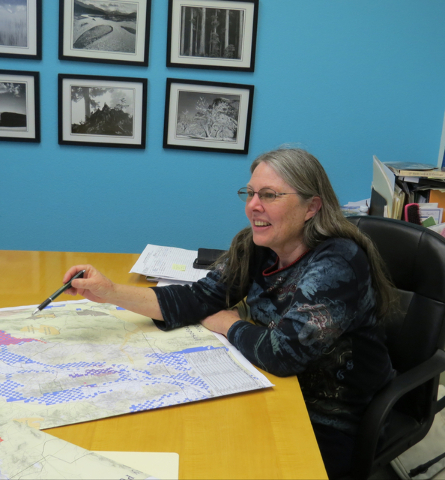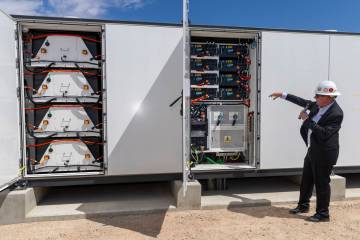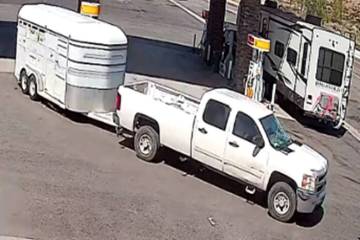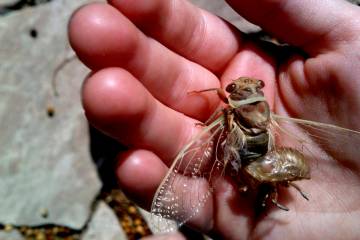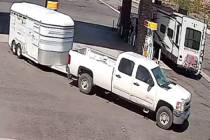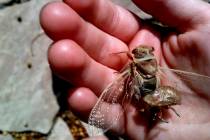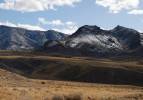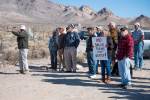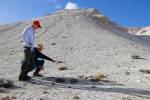Mining group fights federal land proposal
CARSON CITY — A proposal to free up some federally owned lands in Northern Nevada’s rural Pershing County for economic development and create wilderness areas while doing away with others is drawing opposition from one mining group that claims it would cut off access to public lands.
But others say the Pershing County Lands Bill, now a conceptual bill draft in Congress, has been an effort for more than a decade and would tidy up checkerboard land holdings that are a throwback to the days when the railroad was built.
“This is something that’s been an issue for a long time for a lot of counties,” Pershing County Commissioner Patrick Irwin said. “We’re looking for solutions and support for what I feel will benefit Pershing County.”
The federal lands involved are administered by the Bureau of Land Management.
The American Mining Rights Association, a mining and public lands advocacy group, said the proposal amounts to a “land grab” that would inhibit the use of public lands.
“This land grab is just another scheme to take public lands away from the people and sell them off to private developers,” Shannon Poe, president of the group, said in a news release. “It’s atrocious and simply wrong.
“It’s a bad deal for miners and outdoors enthusiasts,” he said. “It would hurt tourism, the economy and ultimately the American taxpayers.”
SENATORS WORK ON BILL
Nevada’s Democratic Sen. Harry Reid and Republican Sen. Dean Heller are facilitating the proposal, which has not yet been introduced and is in draft form only.
“We’re trying to open some wilderness areas up, close other wilderness areas. We’re trying to talk to as many people as we can,” Heller said. Draft language is posted on the senator’s website, and comments are being solicited.
Heller said he just read about the advocacy group’s concerns Thursday.
“I’m not quite sure what their concerns are. But we never move forward with a lands bill that we don’t have local government, state government and federal government all on the same page. And those that it affects: ranchers, agriculture, mining, so forth.”
Reid’s office echoed that process and said the proposal is still preliminary.
“As with every lands bill, we have drafts, we take input from county, business and other officials, and we make appropriate changes to the legislation based on suggestions and concerns,” Reid spokeswoman Kristen Orthman said.
The measure is a complicated undertaking involving proposed trades, sales and conveyances to shuffle ownership and management of land within an area of about 2 million acres.
Proceeds from land sales would be earmarked, with 5 percent going to the state for education and 10 percent to Pershing County. The remaining 85 percent would be placed into a special fund to be used mostly for sage grouse habitat, fire prevention and drought mitigation.
The proposal would eliminate 120,000 acres of existing wilderness study areas formed more than 30 years ago.
The Selenite Mountains Wilderness Study area near the Black Rock Desert would be dissolved, opening it up to potential mining or other development.
Existing boundaries of the Mount Limbo and Augusta Mountain study areas would be reduced and made into formal wilderness areas. Meanwhile, China Mountain and Tobin Range study areas would be reconfigured as expanded as the Tobin Creek Wilderness to protect sage grouse.
The proposal would also establish three wilderness areas: Bluewing and North Sahwave in the western region of Pershing County and Fencemaker in the southeast.
Total wilderness acreage as proposed amounts to 162,000 acres.
The bill also would allow some mining companies to buy pockets of federal land within their existing private holdings, provided they own claims on that property.
And 225 acres encompassing the Unionville cemetery on BLM-owned land would be conveyed to Pershing County.
A 19TH CENTURY PUZZLE
To encourage construction of the railroads, the federal government in the 1800s offered land grants to railroad companies, consisting of alternating sections of 1-square-mile each and extending 20 miles from each side of the tracks. In other more populated states, the sections were moved into private ownership as the state developed. But in sparsely populated Nevada and other Western states, development comes slow, leaving a mosaic of land ownership difficult to manage.
Much of the railroad land along the Interstate 80 corridor in Nevada was sold off and is owned mostly by New Nevada Resources. The checkerboard ownership remains, however, with the BLM owning the alternating sections.
Shaaron Netherton, executive director of Friends of Nevada Wilderness, who has been working on the measure, believes it represents compromise on all sides and would resolve some thorny procedural hurdles.
Before the BLM can dispose of property, it must conduct an appraisal. But doing those assessments on each parcel would be time-consuming and expensive.
“It’s going to cost more than the land is worth,” Netherton said.
Instead, the bill would authorize “acre-for-acre” exchanges within checkerboard areas, allowing for consolidation of blocks of land for easier and more efficient management.
Sections owned by the BLM along the interstate could be swapped for privately owned sections in other areas that would benefit wildlife or outdoor recreation.
“It gives the county some tools and gives the BLM some tools that would allow them to start blocking some of these checkerboard lands, which I think is a good idea because it’s been a problem for more than 100 years,” she said.
PERSHING COUNTY BENEFITS
Irwin said the proposal could bring more property onto the county tax rolls, generating much-needed revenue for the rural economy.
“Right now we’re struggling with budgets … just trying to maintain,” Irwin said. “This will add in the long-term a value that will support county activities.”
But he added all sides have to come together, and assurances are needed that mining claims, grazing rights and access are protected.
“I think the biggest thing people need to do is get out and do their homework and know what the true facts are before they jump to conclusions,” Irwin said.
He’s hopeful consensus will be reached so the measure can proceed.
“I think as long as we’re listening to the constituents … we can put together a good plan and a good bill,” he said.
“We like our seclusion to a point, but we still like to be successful,” Irwin said.
Contact Sandra Chereb at schereb@reviewjournal.com or 775-461-3821. Find @SandraChereb on Twitter.



